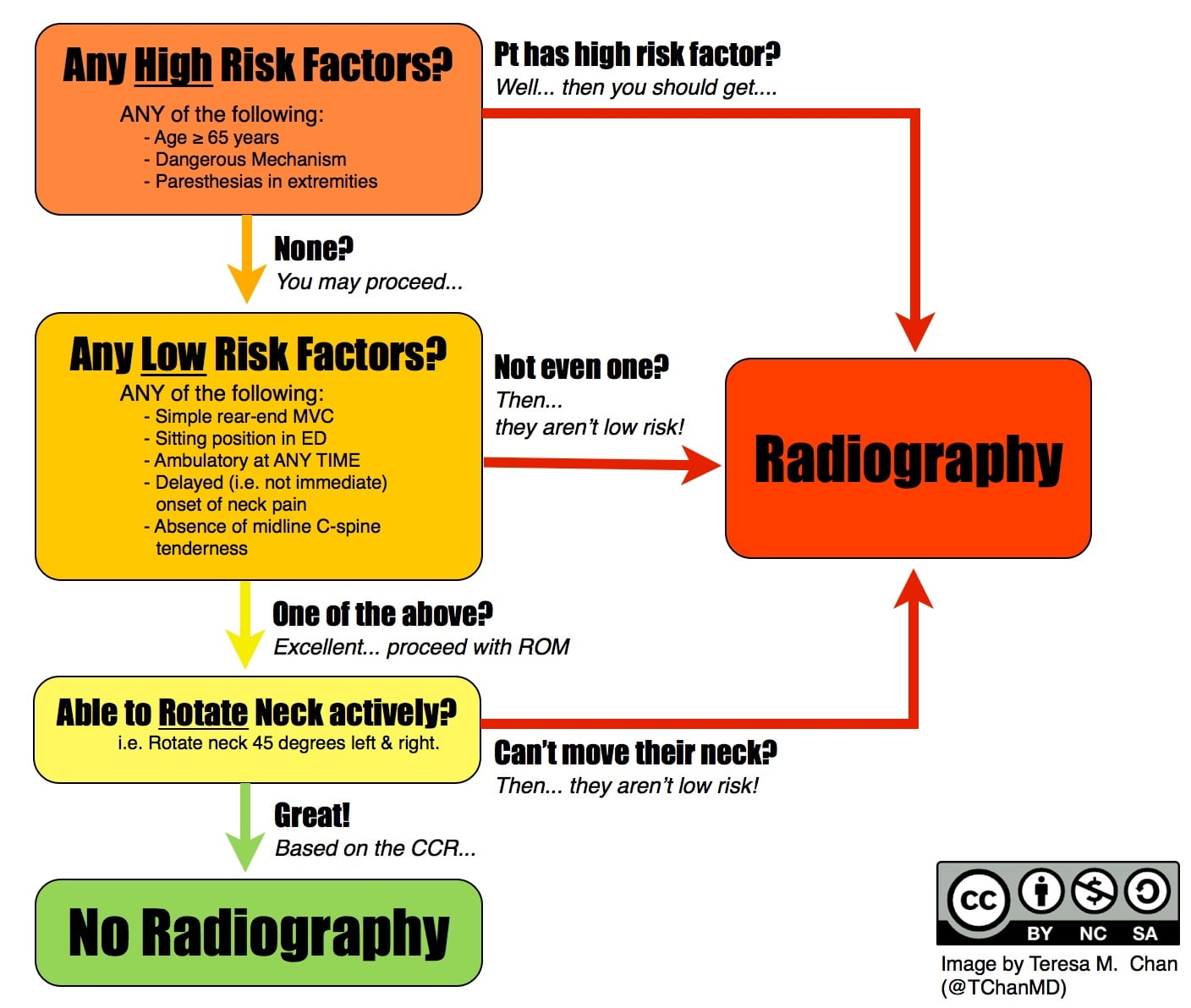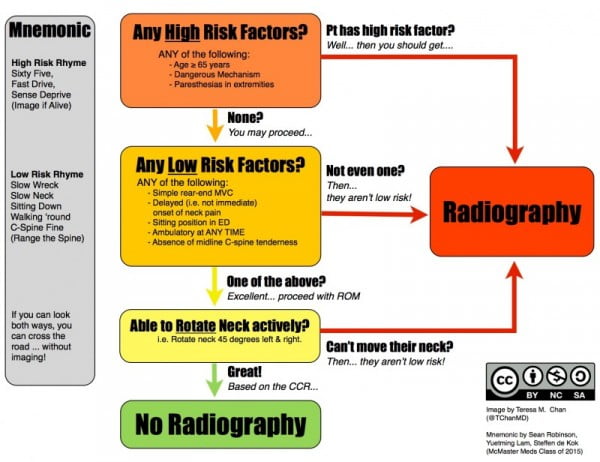Clinical Decision Tool uptake
In 2007, Dr. Ian Stiell wrote a paper [1] about the uptake and real-life implementation of his four clinical decision rules (or as we prefer to call them, clinical decision tools). The paper concludes that “Future research should identify implementation barriers and explore strategies to achieve better knowledge uptake in the ED”.
The BoringEM team hypothesizes that the ease of use may be greatly affected by the complexity of a rule itself – i.e. if the tool itself is complex and unwieldy, it may not be readily taken up. For many people, this has lead to barriers for adoption of the Canadian C-Spine Rules. Especially when compared to the simpler NEXUS spine rule, this CDR often has been noted by various people to be difficult to actually navigate. Even though, NEXUS has been shown to be less sensitive than the CCR.
A new mnemonic
To alleviate this, we have previously presented a diagram to help with this, but recently a group of McMaster University medical students came up with a nifty new mnemonic to help remember each of the parts of C-spine rule. With some editorial support by myself, we’ve added it to the diagram from our previous post for clarity.
Canadian C-spine rule mnemonic
By: Sean Robinson, Yuetming Lam, Steffen de Kok




